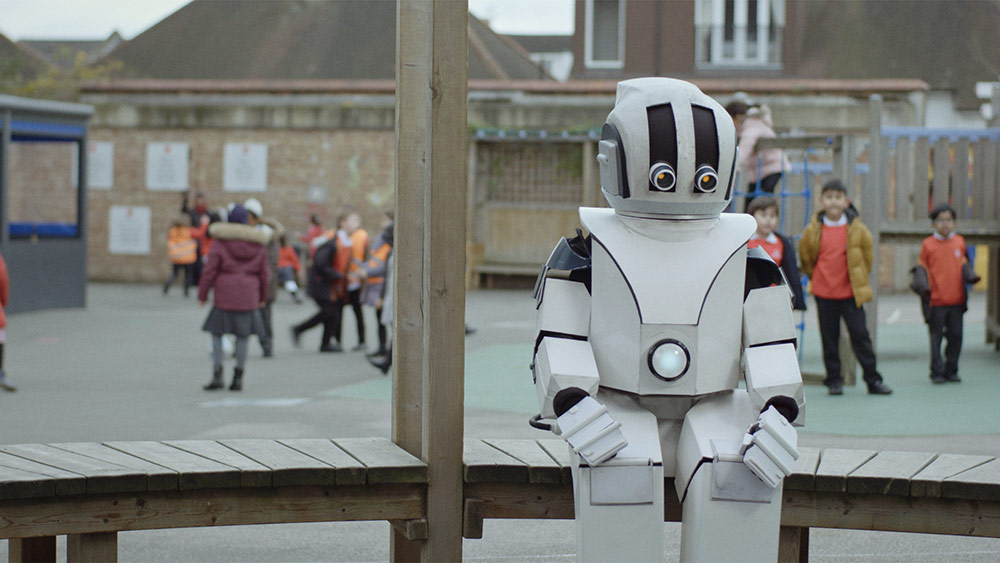In which we interview Dave O’Carroll, Head of Digital at War Child UK, about their new campaign which aims to change the conversation about children’s mental health and war.
- How did you come up with the campaign concept?
Our Advocacy team was producing a report on mental health and psychosocial support (MHPSS) for children in war at the same time as my team was kicking around ideas about how we wanted to do a strong, multi-platform, digital-led engagement campaign which would not shy away from complicated issues.
We felt that our video output had failed to reach the heights of our last campaign video in 2015 and my team was keen to get back into using a video piece as the vanguard of a campaign.
We had a few agencies come in and pitch ideas for the video. Some of them were very strong but, we went with Raw London because they fit with War Child best. I’ve always preferred to go with the people you want to work with rather than just the idea. You can change ideas later.
And that’s exactly what happened. Their initial creative idea was different. It was only after we had appointed them when Tom (Thomas Paul Martin, video Director) came in to us and said “so I’ve changed the concept. It’s now about a robot.”
There was a long silence while we digested this news. Then he presented his concept and we loved it.
- My impression is that mental health for children living with the realities of war is an area which needs a lot of awareness raising. How are you planning to do that in this campaign?
It’s a multi-pronged approach.
First and foremost, we created a video which accurately reflected the realities experienced by children. The Raw team worked closely with our Advocacy team to ensure this happened. We know that people who see it are seeing something accurate. That’s very important to us. We’re now in the middle of an intensive marketing and media plan to ensure that the video gets as many views as possible and is seen by influencers and decision-makers.
The webpage which comes up at the end offers more information and gives people the opportunity to sign up to learn more.
Those who sign up will receive a series of emails which introduce them, via video stories, to children in our programmes and our staff in the field (many of whom have fled conflict themselves and live in the camps where they work in our child-friendly spaces).
That email journey ends by offering a long-form interactive deep dive into the issue. We were keen to present the report’s findings in a more interesting way. Usually we would just upload a PDF and email the link to interested parties, but we felt we could do more.
So we’ve produced a long-form page which pulls out the key findings, stories and recommendations of the report and presents it in an interactive and engaging way.
Digital doesn’t have to always be about simplifying issues down to 10-second videos or tweets. I believe that our supporters are perfectly capable of spending 15 minutes reading about a complicated issue and understanding it – if we present it in an interesting format.
It’s a bit of an experiment but I’m very keen to see how people react to the page. To me, it’s as important as the video.
Between the video, the emails and our various webpages I think we have enough tools to raise awareness.
And obviously at the same time, our Advocacy team are using the report’s findings to speak to, and influence, political decision-makers.
- How will you know if you’ve changed the conversation in this area?
Primarily that’s about seeing the UK Government adopt some of the recommendations in the report, specifically ensuring that aid funding is earmarked for mental health and psychosocial support for children. Recognising that rebuilding countries is as much about rebuilding individuals and communities as it is about rebuilding infrastructure.
From a digital point of view, obviously if we see that lots of key influencers are sharing or commenting on the video then we know that we are at least making them think.
Personally, I’m very interested to see how our supporters react. I’ll be eyeing our email click rates and the Analytics on the long-form page very closely.
- What have the campaign results been like so far?
We launched the campaign and premiered the video in Parliament on 15 January and publicly the next day so it’s still too early to tell in terms of the long-term impact and the results of our email journey etc.
But two days later Stephen Twigg MP, who hosted our launch event, stood up in Parliament and asked Rt Hon Alistair Burt MP, Minister of State for International Development and the Middle East, whether he had seen our report and would act on our recommendations. The Minister gave a very positive answer stating that he “will certainly look” at our report and proposal for 1% of humanitarian funding to be ring-fenced for mental health and psychosocial support for children affected by conflict. We are very pleased with that.
The response to the video has been fantastic. It had 100,000 views in the first 3 days and we’ve had some incredible feedback from people in politics, the humanitarian sector, brand creatives, other charities and the public in general.
And we still have a lot up our sleeve to maintain this momentum, so watch this space.

